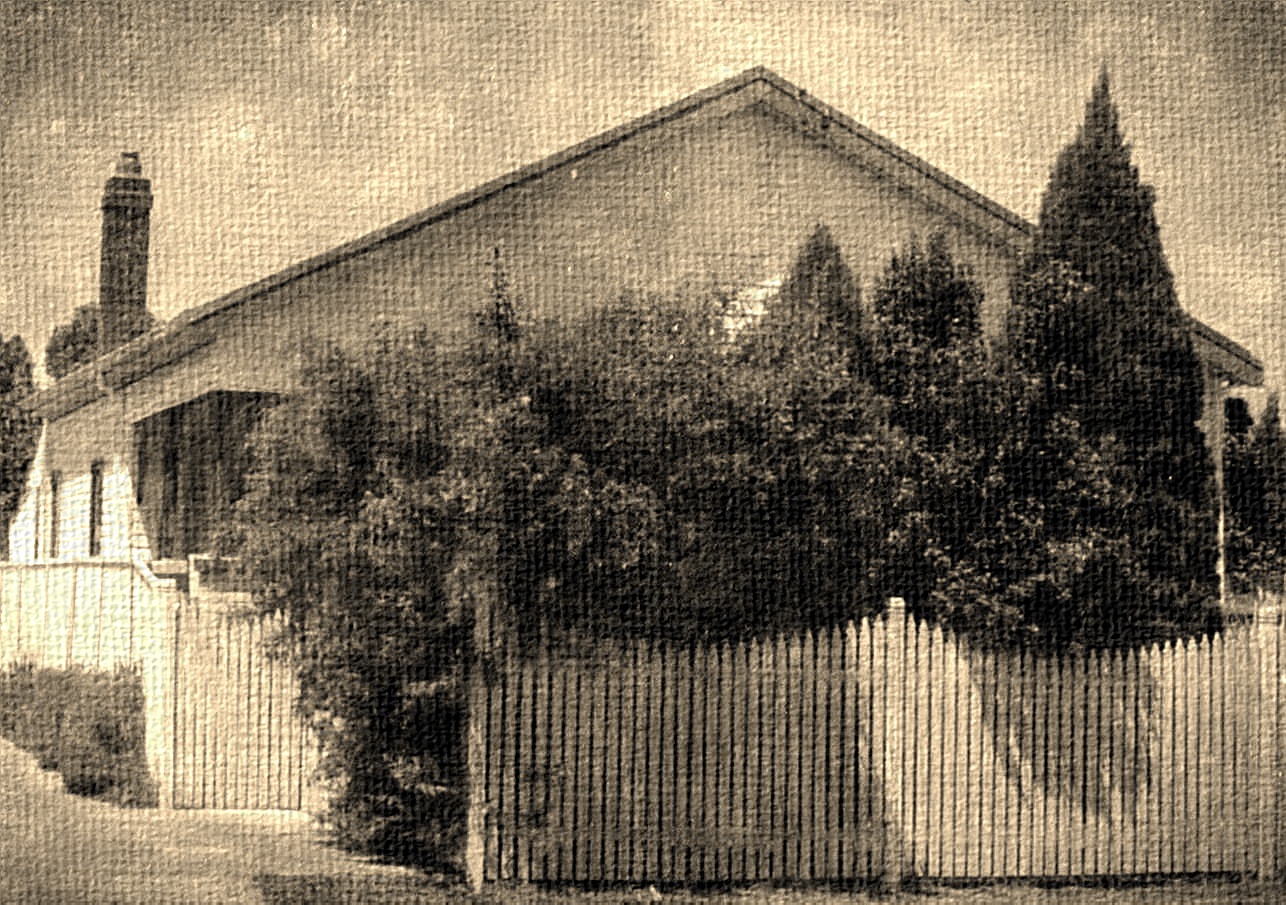A cottage it is not.
And if that word invokes a picturesque vine-clad Seven Oaks with shrubs and flower gardens, worn stone path beneath rose-entwined pergola, quaint gables nestled beside a rustic lane in some rural village... then we are both to be sadly disillusioned.

Throsby 'Cottage' is a very ordinary suburban dwelling made of weatherboard and iron.
For the international reader, 'weatherboard' is timber sidings. External walls made from overlapping planks of wood. Americans might call it clapboard, but after decades indulging their cultural imperialism, I don't recall ever hearing the spoken term.
'Iron' is corrugated galvanised-steel roofing. We like a tin roof in Australia. It heats the house in summer and cools it in winter. Awkward conversation is avoided by the drumming of heavy rain. It's a very good detector of tiny asteroids and an excellent sounder of material types thrown by midnight urchins.
Australian houses are traditionally unimaginative. For a century they followed a few basic patterns: three bedrooms adjoining a central hallway; two bedrooms and a side entrance; and gun-barrel, a very narrow house for small-frontage properties. Modern construction technique allows more varied internal layouts but ironically an exterior monotony of dark grey cheek-by-jowl residential brutalism.
Throsby Cottage is a traditional small bungalow approaching its 80th birthday. Not bungalow in the Australian sense of a shack or sleepout, please no, but a lesser of the American style. Despite an ugly exterior, it has a rather comfortable internal layout.
Through the front door is a very generous foyer from which French doors open to a sun-drenched wrap-around verandah with views to the west and north. A very pleasant room indeed. This traditionally smaller and useless space, to our delight, readily billets the library, a piano, and the tea table where we eat Kentucky Fried Chicken on festive occasions and watch lesser-nourished citizens traipse the lonely street outside. On saner occasions we modestly indulge Oolong tea and ginger biscuits.
Mrs Throsby (aka The Consort) and I have lived here for more than two decades. It's the longest either has lived in one place. Our partnership began only months before acquiring this new and final home, so you might say we and our house are a threesome, bound till the very end by economics, and possibly love.

At this very moment, Throsby has reached, surpassed even, his 75th birthday, the age at which his father died. He resolves, therefore, to take life one day at a time. As we all do, except each day will be acknowledged as a gift. Consciously, and gratefully.
The significance of this age is its apparent stasis. Since retirement, Throsby has felt a sense of immortality. Not a megalomaniac sense of imperishability, but a feeling of time rushing by for the rest of the world while his internal life has taken the stance of eternal observer.
Dwelling in a quiet street for twenty years reveals the essence of that formidable cliché, The Passing Parade.
We have seen families come and go. Babies born, attend school, get jobs... marry even. Middle-aged people age and perish. Vacant land consumed by house. House demolished and replaced. We have seen the suburb itself transform. Its thriving commercial centre - a spectrum of traditional shops: newsagents, hardware, clothing - decayed into bankruptcies, family proprietors replaced by massage parlours, money lenders, privatised social 'providers,' and fast-food outlets. Finally, of late, the invasion of supermarkets and fuel-vending corporations have obliterated the village atmosphere.
A once productive shopping strip that served foot traffic of local residents is no more than a highway truck stop, a fast-food strip, and a thoroughfare for fleets of SUVs descending locust-like upon the grocery chains.
Such might be life, but why does it always seem to grow inexorably worse?